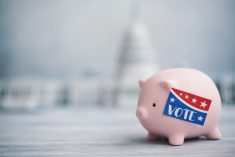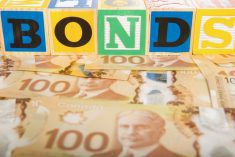My last column looked at potential investments in nuclear and geothermal, two viable alternative energy sources. Let’s now look at possibilities in what’s considered the alternative energy holy trinity of wind, solar and electric vehicles. These three areas have taken most alternative energy investments over the past decade.
Estimates of what has already been spent on a green energy transition vary widely. Numbers are as high as $10 trillion over the past five years, with an estimate of $6 trillion needed annually to reach the net zero 2050 goal. Currently, there is estimated to be more green energy capex than fossil fuel capex. Lack of fossil fuel investment is why I think we are sleepwalking to a major energy crisis, written about previously.
Whatever the expenditure numbers on green energy have been, they are staggering. Despite this enormous spend, from 2012 to 2022 fossil fuel percentage of the entire energy mix only declined from 79.9 to 76.7 per cent, while total fossil fuel usage increased by 8.6 per cent as total energy usage grew by 13.2 per cent (the source is Our World in Data).
Read Also

Managing through market or individual stock declines
Even the best of public-traded companies can periodically experience significant drawdowns, and a successful investor should be prepared to react — or not react — accordingly, Herman VanGenderen writes.
Total energy consumption is directly correlated to world economic growth. Should energy consumption continue to grow at one to 1.5 per cent per year, expenditure on green energy will need to grow at twice the rate of the past decade, just to keep fossil fuel usage flat. The skeptic in me wonders where all the money will come from.
Whether you believe carbon dioxide is ruining the world or not, this kind of prospective investment represents an opportunity. As always, due diligence should be followed when assessing investments, and I prefer those with a track record and exhibiting profitability and positive cash flow. (For disclosure purposes, I have an interest in those companies asterisked. I am not making recommendations, but simply listing North American companies in the areas described.)
China dominates solar panel production with 75 per cent market share. Despite the growth in solar, panel manufacturers have been very volatile and cyclical. First Solar is by far the largest manufacturer in the western hemisphere, also importing panels from Asia. It has exhibited intermittent profitability and as a major beneficiary of Biden’s Inflation Reduction Act, its stock price has soared but remains well below its $300 per share speculative price during the 2008 energy crisis. I owned it in the past along with another U.S.-based company SunPower, which has always struggled with profitability. Canadian Solar* has been the most consistently profitable but its share price hasn’t reflected this aspect.
Numerous companies support the solar industry. Enphase Energy* is a world leader in the microinverters that convert the DC current produced to grid-compatible AC power. Array Technologies produce electric motors and gearboxes that move the panels like a sunflower head to maximize production.
Wind turbine manufacturing is also dominated by Chinese companies along with two European companies, with the only large U.S. manufacturer being General Electric. There are also wind tower manufacturers. I used to own Arcosa when it was part of Trinity Industries, but unfortunately sold when Trinity split into two companies.
My largest exposure to the wind and solar sector is through renewable energy electricity generators. Most generators are moving towards renewables, but some have had this focus a long time. Alberta-based Capital Power* has been a long-term successful holding with facilities in Canada and the United States. I recently added Northland Power*, which has a Canadian and European focus. Algonquin Power was a leader in this area but recently made major corporate missteps causing it to cut its dividend. Boralex and Brookfield Renewables are other Canadian renewable generators. The United States has several such companies with Nextera being the leader. I owned it for a long time and profitably sold it when it looked too expensive. It continued to perform well until recently.
The rapid increase in interest rates has had a major effect on generators with large capex plans. It’s much easier to justify capital expenditures with very low interest rates.
The electric vehicle market
Tesla is the 1,000-pound gorilla of the electric vehicle (EV) market. I used it as one of my examples of speculative excess, and while it has recently become profitable, it still trades at 70 times earnings, whereas Toyota trades at 10 times earnings and GM at less than five times.
Tesla also sells and installs solar panels and storage batteries. Tesla holds more than 50 per cent of the North American EV market, but as all manufacturers have introduced more models their market share has been steadily declining. EVs made up just 5.6 per cent of America’s new vehicle fleet in 2022, and adoption growth has slowed in 2023. Perhaps interest rates are making consumers question the additional cost. It has recently been reported that EV inventories as a percentage of sales are three times ICE (internal combustion engines) inventories on dealer lots.
Another U.S.-based EV manufacturer is Rivian, which I mentioned during the speculative mania when it had a $150-billion market cap before it sold its first vehicle. It’s now at a $22-billion market cap, and still highly speculative. Lucid is a similar such speculation as is Canada-based Lion Electric. Slightly less speculative is Winnipeg-based NFI Group*. NFI is a significant global bus manufacturer that has fallen on hard times. I purchased it when it was profitable and had a long-term profit record. It lost money since 2020 and has lamented Covid-related parts supply challenges. It manufactures buses with all types of propulsion systems including clean diesel, natural gas, hybrid electric, battery electric and fuel cell. I think returning to profitability will prove easier than starting from scratch.
















